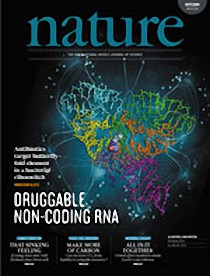All AbMole products are for research use only, cannot be used for human consumption.

PF-04217903 (PF-4217903) is a novel ATP-competitive small molecule inhibitor of c-Met kinases with the IC50 values from 3.1 nM to 142 nM. PF-04217903 (PF-4217903) demonstrated >1000 fold selectivity for c-Met compared with >150 kinases, making it one of the most selective c-Met inhibitors described to date. PF-04217903 (PF-4217903) inhibited tumor cell proliferation, survival, migration/invasion in MET amplified cell lines in vitro, and demonstrated marked antitumor activity in tumor models harboring either MET gene amplification or a HGF/c-Met autocrine loop at well-tolerated dose levels in vivo.

Pharmacol Res. 2023 Jan 7;188:106640.
Blocking the HGF-MET Pathway Induces Resolution of Neutrophilic Inflammation by Promoting Neutrophil Apoptosis and Efferocytosis
PF-04217903 purchased from AbMole

Elife. 2019 Sep 19;8. pii: e47460.
A distinct cardiopharyngeal mesoderm genetic hierarchy establishes antero-posterior patterning of esophagus striated muscle.
PF-04217903 purchased from AbMole

Nature. 2015 Jun 18;522(7556):349-53.
MET is required for the recruitment of anti-tumoural neutrophils.
PF-04217903 purchased from AbMole
| Cell Experiment | |
|---|---|
| Cell lines | B16F1, Tib6, EL4, and LLC, and endothelial cells, HUVECs and C166 |
| Preparation method | Cell lines, including B16F1, Tib6, EL4, and LLC, and endothelial cells, HUVECs and C166, were seeded at 104 cells in each well of 24-well tissue culture–treated plates. Cells were grown in the standard media as described earlier. Cells were treated with different concentrations (2, 0.2, and 0.02 μmol/L) of sunitinib, PF-04217903, and combination of both compounds for 4 days. Efficacy of the compounds was measured by counting cells in a Coulter counter machine (BD Biosciences). Similar approach was applied to evaluate the role of HGF or VEGF on cell proliferation, using 3 different concentrations (10, 100, and 200 ng/mL) of each ligand. |
| Concentrations | 2, 0.2, and 0.02 μmol/L |
| Incubation time | 4 days |
| Animal Experiment | |
|---|---|
| Animal models | B16F10 tumour-bearing mice |
| Formulation | 0.5% methylcellulose in saline |
| Dosages | 40mg/kg PF-04217903 |
| Administration | oral |
| Molecular Weight | 372.38 |
| Formula | C19H16N8O |
| CAS Number | 956905-27-4 |
| Solubility (25°C) | DMSO 15 mg/mL |
| Storage |
Powder -20°C 3 years ; 4°C 2 years In solvent -80°C 6 months ; -20°C 1 month |
| Related c-Met Products |
|---|
| Zurletrectinib
Zurletrectinib (ICP-723) is a potent tyrosine kinase inhibitor. Zurletrectinib serves as an antineoplastic agent. Zurletrectinib can used for research of TRK-mediated related diseases. |
| ABN401
ABN401 is a highly potent and selective ATP-competitive c-MET inhibitor with an IC50 value of 10 nM. |
| (Z)-Semaxanib
(Z)-Semaxanib is a potent tyrosine kinase inhibitor. |
| MET kinase-IN-2
MET kinase-IN-2 is a potent, selective, orally bioavailable MET kinase inhibitor with an IC50 of 7.4 nM. |
| BMS-817378
BMS-817378 is a potent and selective inhibitor of MET with IC50 of 1.7 nM. |
All AbMole products are for research use only, cannot be used for human consumption or veterinary use. We do not provide products or services to individuals. Please comply with the intended use and do not use AbMole products for any other purpose.


Products are for research use only. Not for human use. We do not sell to patients.
© Copyright 2010-2024 AbMole BioScience. All Rights Reserved.
